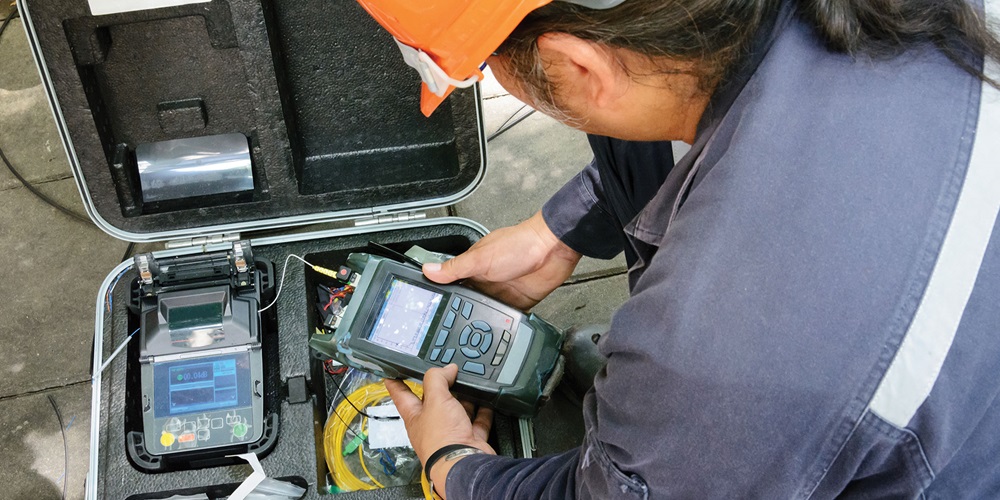High-quality ofda devices ensure precise fibre testing and consistent results.
Wiki Article
The Duty of Optical Fibre Screening in Ensuring High Quality and Efficiency in Connectivity Solutions
In today's quickly advancing electronic landscape, the relevance of optical fibre testing can not be overemphasized, as it offers as a keystone for making certain the quality and performance of connection services. As modern technology proceeds to advance, the future of optical fibre testing poses appealing difficulties and chances that merit closer assessment.Relevance of Optical Fibre Screening
The importance of optical fiber testing can not be overstated in making certain the honesty and efficiency of interaction networks. As the backbone of modern telecommunications, optical fibres promote high-speed information transmission, making their dependability crucial to operational success. Evaluating functions as an aggressive step to recognize prospective problems such as signal loss, depletion, and physical damages, which can endanger network efficiency.Normal screening enables the confirmation of installment high quality and the detection of problems that can influence data honesty - optical fibre testing equipment. By utilizing extensive testing protocols, network operators can alleviate the threats connected with network failures, consisting of downtime and economic losses. Optical fiber screening makes certain conformity with market requirements and policies, improving the general quality of service supplied to end-users.
Eventually, the methodical assessment of optical fibers adds to the durability and effectiveness of communication systems. It enables stakeholders to make enlightened choices pertaining to upkeep, upgrades, and troubleshooting. In a landscape where data is progressively important, prioritizing optical fibre testing is necessary to maintaining durable and reliable connectivity remedies, thus sustaining the needs of modern digital atmospheres.
Types of Optical Fiber Tests
Various testing methods are employed to ensure the performance and dependability of optical fibers within interaction networks. These examinations can be generally classified right into 2 primary types: setup examinations and maintenance examinations.Installation examinations are conducted right away after the installation of optical fiber cords to validate their efficiency and stability - optical fibre diameter analyser. The most usual installation examinations include Optical Time-Domain Reflectometry (OTDR) examinations, which analyze the quality of the fibre by identifying mistakes or breaks, and end-to-end loss tests, which gauge the overall optical loss from one end of the fiber to the various other
Maintenance tests, on the various other hand, are performed regularly to guarantee ongoing efficiency and find potential problems over time. These include aesthetic assessment, which checks for physical damages or inappropriate installations, and continuity tests, which validate that the signal can go through the fibre without disruption.
Additionally, progressed examinations such as Polarization Setting Diffusion (PMD) and Chromatic Dispersion (CD) tests can be conducted to review the fibre's performance under numerous problems. By utilizing these diverse screening methods, specialists can keep high criteria of quality and integrity in optical fiber networks.
Benefits of Routine Examining
Regular testing of optical fibres plays a critical role in preserving the general performance and reliability of communication networks. By carrying out routine analyses, companies can make sure that their fiber optic installations satisfy market criteria and operate efficiently. This positive approach aids to determine prospective weak points and destruction gradually, enabling timely interventions Clicking Here prior to issues rise.
Cost-effectiveness is an additional benefit. By addressing small issues early, companies can avoid the high prices related to significant fixings or system failings. Routine testing also fosters compliance with regulatory needs, making certain that the network abides by necessary safety and efficiency requirements.
Common Concerns Determined
Identifying common problems in optical fiber networks is important for keeping optimal performance and dependability. Numerous variables can add to disturbances, including physical damages, bad installment practices, and ecological impacts.Physical damages, such as bends, breaks, or abrasions, can dramatically deteriorate signal quality. Improper setup techniques, consisting of extreme tension or insufficient protecting of wires, might cause increased attenuation and loss of connection. In addition, environmental variables such as temperature level fluctuations, moisture access, and rodent disturbance can compromise the honesty of the fibre.
Connector problems also often develop, with improper alignment or contamination leading to enhanced insertion loss. Splicing mistakes can present considerable signal degradation if not executed with accuracy.

Resolving these usual issues through normal optical fibre screening not only enhances network dependability yet also optimizes overall efficiency, guaranteeing that connectivity remedies continue to be robust and reliable.
Future Fads in Evaluating
As the demand for high-speed connectivity remains to rise, the future of optical fiber screening will significantly focus on automation and advanced analytics. The combination of artificial intelligence (AI) and device understanding (ML) in screening processes will allow extra effective information analysis and anticipating maintenance, decreasing downtime and enhancing total network integrity. Automated screening remedies will simplify the inspection and accreditation of fibre networks, minimizing human error and raising screening throughput.An additional substantial fad is the fostering of remote screening modern technologies. As the deployment of fibre networks broadens into remote and underserved locations, remote testing capabilities will certainly permit technicians to keep track of and detect network problems without physical presence, consequently decreasing functional prices and improving action times.
Furthermore, there will certainly be a change towards more extensive helpful resources screening criteria that include not just conventional loss measurements however additionally performance metrics such as latency and bandwidth usage. This holistic method will facilitate far better network administration and optimization strategies.
As these trends evolve, the optical fibre screening landscape will certainly not just enhance the high quality and efficiency of connection remedies however likewise support the expanding intricacies of modern-day communication networks.
Conclusion
In conclusion, optical fiber testing works as a basic component in maintaining the honesty and performance of interaction networks. By systematically evaluating various specifications via developed screening methods, potential issues are identified and fixed, making certain ideal efficiency. The continuous commitment to routine screening not only boosts data transmission however likewise straightens with market criteria, promoting reliability in network frameworks. As innovation advances, the significance of cutting-edge testing methods will certainly continue to grow, further advancing connection services.Report this wiki page